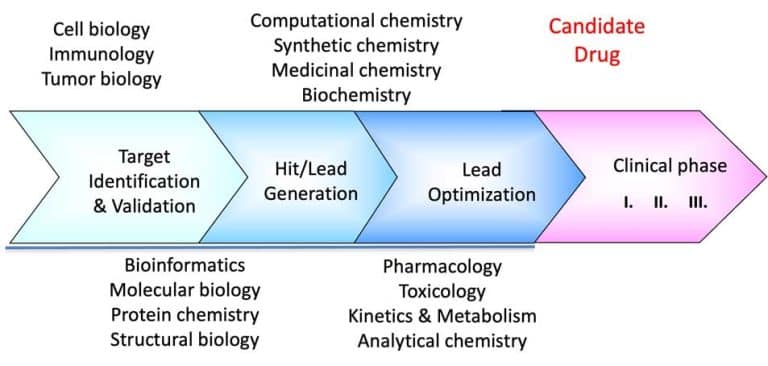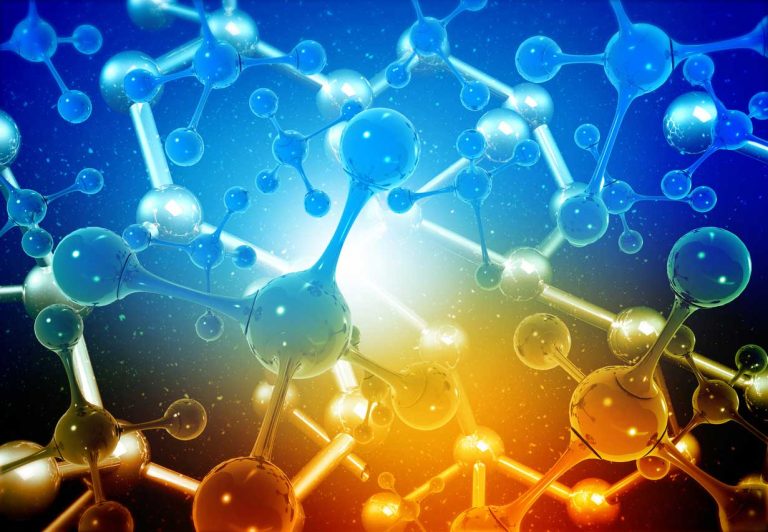EU-Funded Research Projects with SARomics
Since our first trip into the realm of EU projects with the KINOMED project, we have engaged in 7 different…
Since our first trip into the realm of EU projects with the KINOMED project, we have engaged in 7 different EU projects by now. The KINOMED project (2010-2013, funded by the Eurostars program) was focused on cloning, expression, purification, and fragment-based screening of two kinases, PIM1 and CK2, followed by co-crystallization of the proteins with the best fragments found during the screening. The second project was TAKTIC (Translational Kinase Tumour Inhibitor discovery Consortium). The project focused on the NF-κB signaling pathway, activated by cellular responses to stimuli such as stress, cytokines, free radicals, ultraviolet irradiation, etc. The project’s focus was the design of novel inhibitors of NIK, a MAP3K- kinase responsible for the phosphorylation of IKKα homodimers within the so-called non-canonical NF-κB pathway (see, for example, the NF-κB inhibitors site).
Our current EU project involvements include Virus-X, BIOCASCADES, SAFER, and PhD4GlycoDrug. These projects contribute considerably to expanding our research and business networks, introducing us to new fields, and opening up new opportunities.
The Virus-X project targets selected microbial ecosystems to find and analyze new virus genomes and identify new gene products useful for biotechnological applications. Many academic and industrial partners (Matis, Bio-Prodict BV, ArcticZymes, SARomics Biostructures, A&A Biotechnology, Pasteur Institute, University of Bergen, Bielefeld University, Blaise-Pascal University, Max Plank Institute, University of Gdansk, Durham University, University of Stuttgart, Lund University) are involved in various aspects of the project. These include environmental sampling and metagenome sequencing; annotation & Structure-Function characterization using bioinformatics tools; cloning, expression & purification of chosen proteins; activity screening; crystallization and X-ray structure determination. By contributing to the structural characterization of the identified proteins, SARomics Biostructures contributes to several of the project’s main scientific objectives, among which are:
• Elucidating the function of hypothetical genes and orphan gene products
• Discovering novel genes and viral enzymes for specific applications
• In-depth studies on the structure-function relationships of the viral enzymes
The virosphere represents the largest reservoir of unknown genetic diversity, while the viral gene pool has enormous potential as a source of new innovative tools for biotechnological applications. Due to their unusual biology and lifecycle, viruses have evolved specialized replication machinery and carry enzymes with unique properties, often very different from cellular host enzymes. Many significant milestones of modern biotechnology and molecular biology were achieved using phage gene products, including numerous nucleic acid processing enzymes. Further progress in molecular biotechnology will lead to increasing demands for discovering and developing new enzymes with superior properties, most probably from novel organisms. The Virus-X project aims to analyze and exploit the viromes-specific extreme natural environments, particularly geothermal habitats, to develop new gene products of high innovation value for applications in biotechnology, pharmaceutical, medicinal, and other life science sectors. For this objective, enzyme discovery and other developments in the Virus-X project will focus on specific non-structural viral proteins such as proteins participating in anti-host defense (polynucleotide kinases and RNA ligases), DNA replication/transcription enzymes, DNA ligases, exo-, and endonucleases. A distinctive theme in the project is promoting the discovery of gene products with new functions (Virus-X). Functional screening and X-ray structure determination are used to gain insight into orphan gene products’ possible activity and functional role.
The BIOCASCADES project (Sustainable and Scalable Biocatalytic Cascade Reactions) is also focused on industrial applications, namely the development of sustainable (chemo)enzymatic cascade reactions for the synthesis of optically pure chiral amines and amino alcohols as pharmaceutical ingredients. It is estimated that 40% of all pharmaceuticals currently contain a chiral amine component in their structure. Eight academic laboratories form the consortium with complementary expertise – biocatalysis (TU Delft, KTH Stockholm), enzyme discovery (University Greifswald, University Amsterdam), protein engineering (TU Graz, Ruhr-University Bochum), and chemoenzymatic synthesis (University Bielefeld, University Oviedo). They work together with DSM (currently INNOSYN, a spin-off from DSM) and four other enterprises with expertise in bioinformatics and structural biology (SARomics Biostructures), enzyme immobilization (Viazym), enzyme production (Enzymicals) and technical-scale biocatalysis (EntreChem).
Cascades reactions (presence of all reagents and catalysts from the beginning) and one-pot reactions (reaction in one compartment with successive addition of catalysts/reagents) from a Green Chemistry point of view represent a promising approach to performing multi-step syntheses, mainly due to the avoidance of intermediate downstream purification steps. This also significantly contributes to cutting production costs on an industrial scale by allowing the utilization of a side product as a co-substrate for subsequent reaction steps. Multi-step cascades that use the targeted design of cascade reactions will enable the assembly of enzymatic and chemical steps in a completely novel way, mimicking biological reaction pathways. Among the specific aims of the BIOCASCADES project is to
– combine different well-established enzymes and chemical catalysts in an innovative way to design novel cascades
– broaden the catalytic scope by combining enzymatic transformations with transition-metal organic catalysts
– use compartmentalization techniques and enzyme engineering to improve catalyst compatibility and suppress cross reactivity
– optimize space-time yield and atom economy by establishing novel methods for the shift of equilibrium, in situ (co)-product removal, and by protein engineering
– to develop strategies for the scale-up of viable (chemo)enzymatic cascade reactions
SARomics Biostructures will contribute to designing and producing new stable enzyme variants suitable for cascade reactions in organic or biphasic media by protein engineering, bioinformatic analyses, and predictive enzyme design, all assisted by X-ray crystallographic structure determination. Several exciting publications are coming from this project, and we will do our best to spread the word when they are out!
On the photo: A visit to hot springs on Island, where samples for the Virus-X project were collected!







